Noise Pollution
What is noise pollution? And what are the effects of noise pollution?
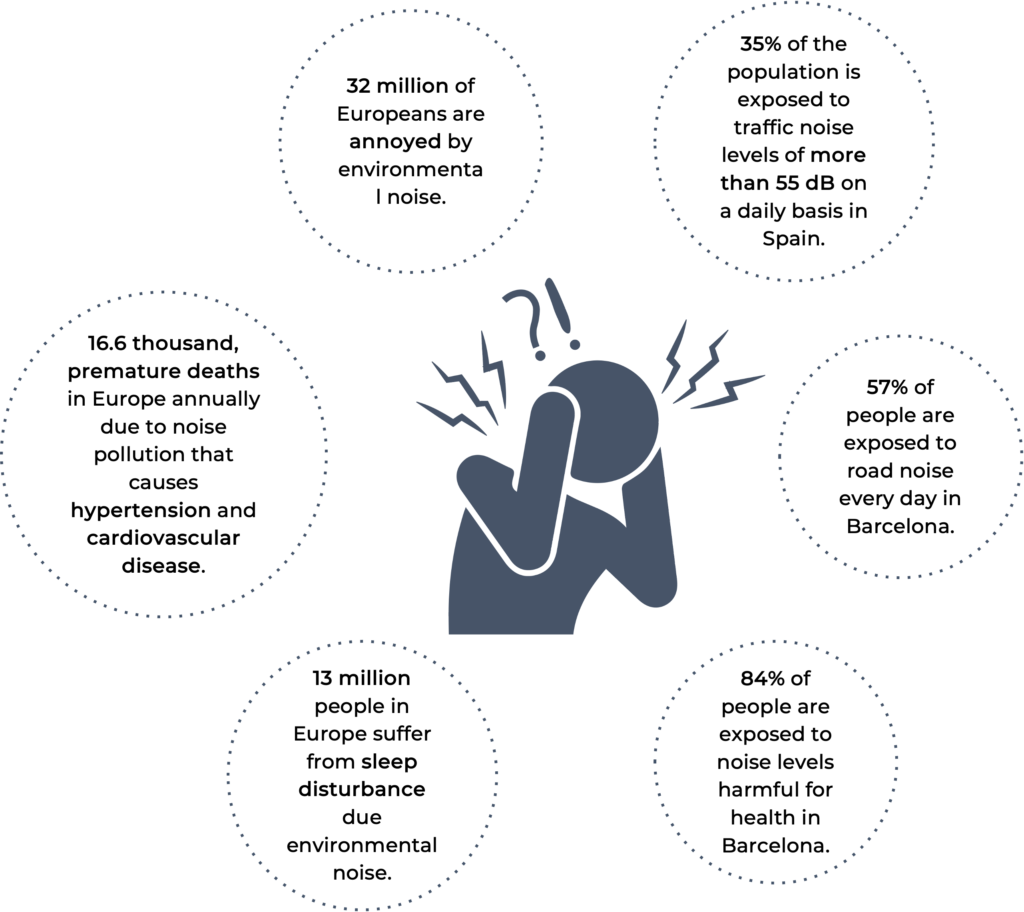
Noise pollution is considered to be any unwanted or disturbing sound that affects the health and well-being of humans and other organisms. And World Health Organization considers decibels over 65 dB noise pollution. Noise pollution is affecting everyone. For some people, it’s just an annoyance, but for others, it’s a severe health issue. For instance, annually, 16.6 thousand premature deaths in Europe is due to noise pollution, which causes hypertension, and cardiovascular diseases.
Sound vs Noise
Sounds can be used to communicate, warn, navigate and as a form of entertainment. Noise is an unwanted or unpleasant sound. Therefore, all noises are sounds, while not all sounds are noises. People may perceive sounds and noise differently. Noise can cause mental and physical disturbances, which can affect our quality of life.
Thesis Statement
As the world continues to develop rapidly, the problem of noise pollution, especially in metropolitan cities, cannot be eliminated. On top of that, its negative effects on those exposed to long-term noise pollution include threats to severe health problems such as stress and cancer. “Corteza” is an experimental design proposal in addition to the Barcelona city Council Superilla project to tackle the noise pollution problem. Mostly focuses on Superilles car-use areas such as Eixample. It consists of modular scaffolding systems made by large-scale 3d printing with cork, that can be used on surfaces or by itself.
1st Terms Workflow
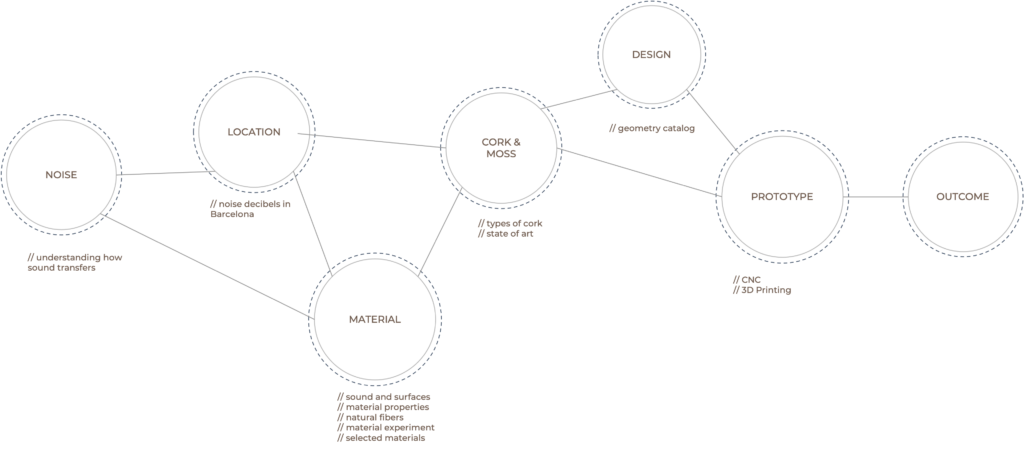
Throughout this project, there is a workflow that I have followed. I started by understanding the noise, then the noise problem issue in Barcelona, and local sound-absorbing materials and then continued with the design process.
Understanding the Noise
Sound Waves
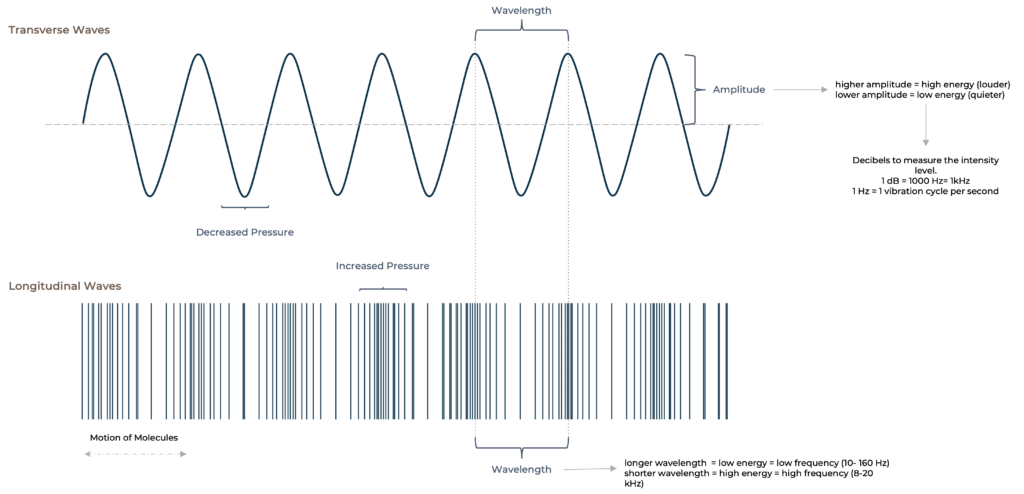
I examined how sound is measured. The decibel and frequency range. Frequency is the number of vibrations or cycles of sound per second measured in hertz. Decibels measure the strength of these vibrations, which is the amplitude.
Decibel and Frequency Range
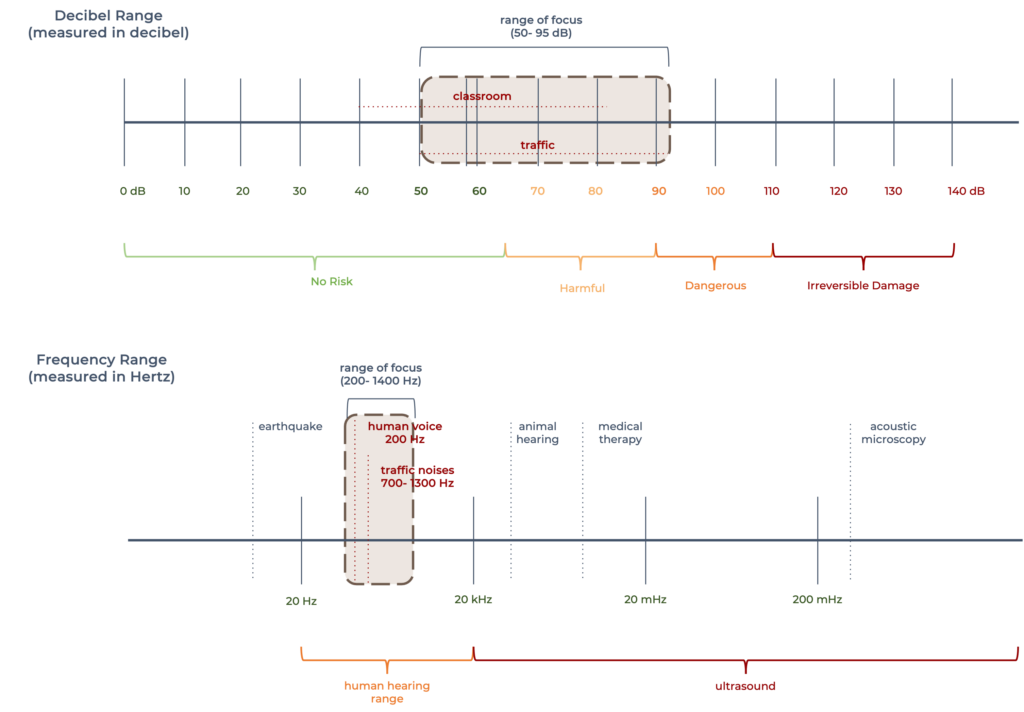
The range of focus for this project is traffic noises and the human voice, which ranges between 50 and 90 decibels or 200 to 1300 Hertz.
Noise and Humans
A Misophonists Noise Map
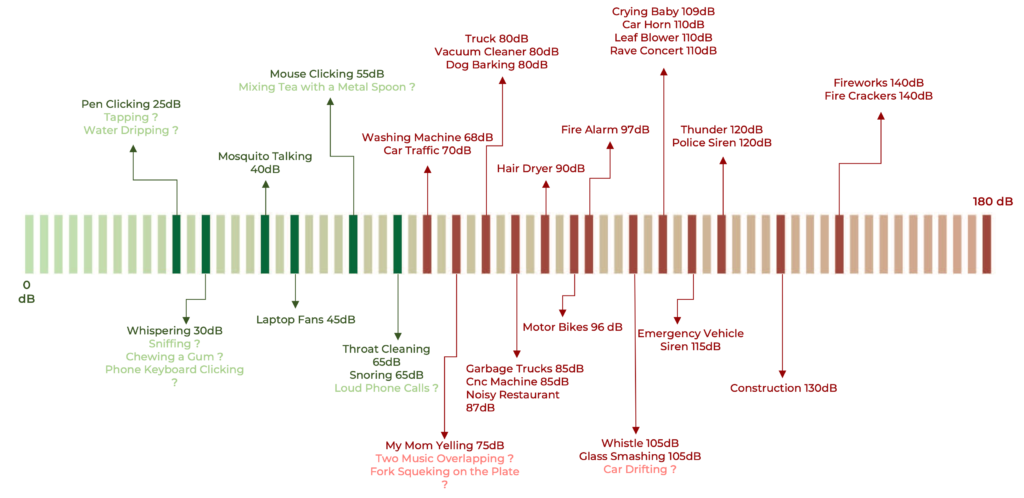
One of the main reasons, I was dragged to this topic was that I’m a highly sensitive person when it comes to noise. I can even consider myself having Misophonia disorder. It’s a disorder in which certain sounds trigger emotional or physiological responses. Such as anxiety, rage and panic. To understand the noise more personally, I wanted to make a chart of the noises that annoy me with their decibels. Such as pen clicking, which is 25 dB or crying baby, which is 109dB etc.
Causes of Noise Pollution
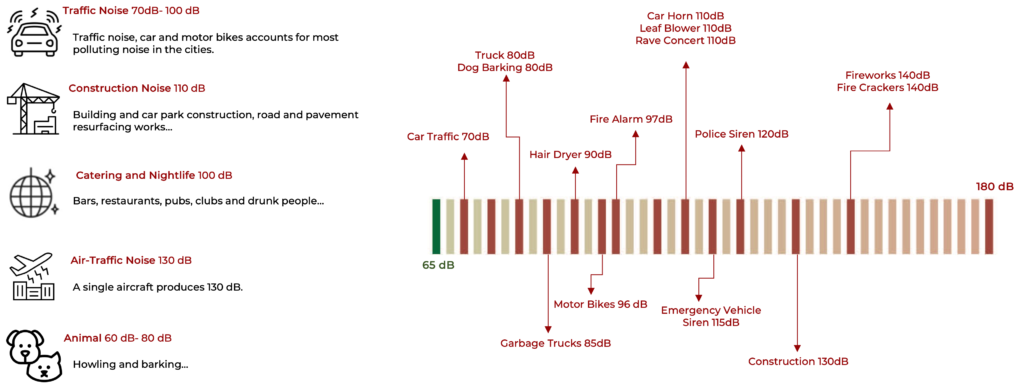
However, the main reasons for noise pollution are traffic noises, construction noises, nightlife, air traffic and animal noise. Since noises such as animals, or air-traffic are not so constant, they don’t bother us that much even though their decibel is much higher. Although noises like traffic noises are more constant, therefore, they are more harmful to us.
Noise in the City
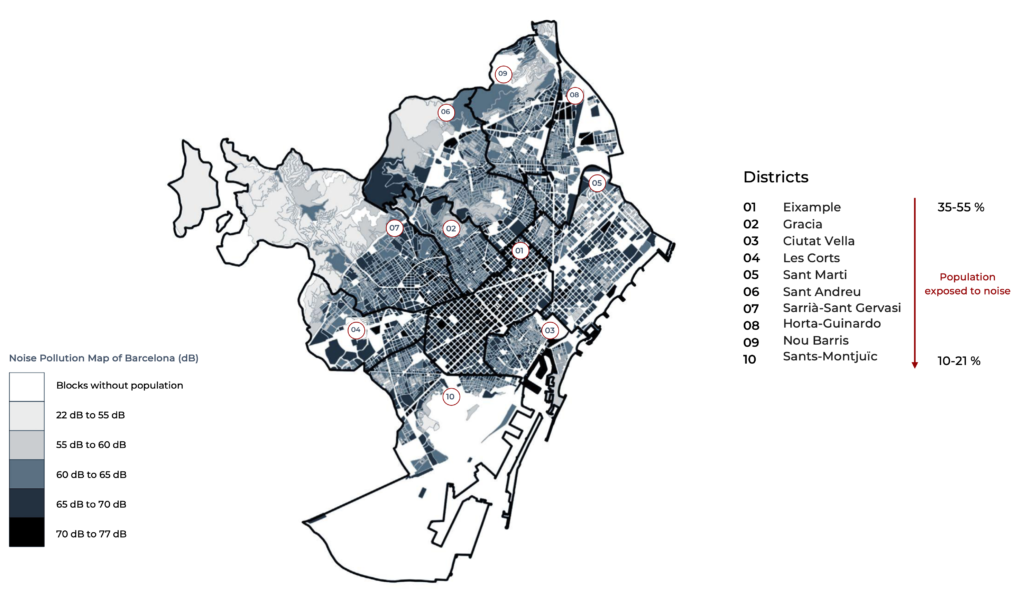
If we consider noises in Barcelona the traffic noises are mostly through avinguda diagonal, gran via etc. Although the leisure activities such as protests, marches, festivals are in Passaige de Gracia, in Ramla. Eixample district is one of the highest districts that exposed to noise pollution around 35 to 55 percent. whereas sants monjuic is the lowest around 10-21 percent.
Focused Neighbourhood
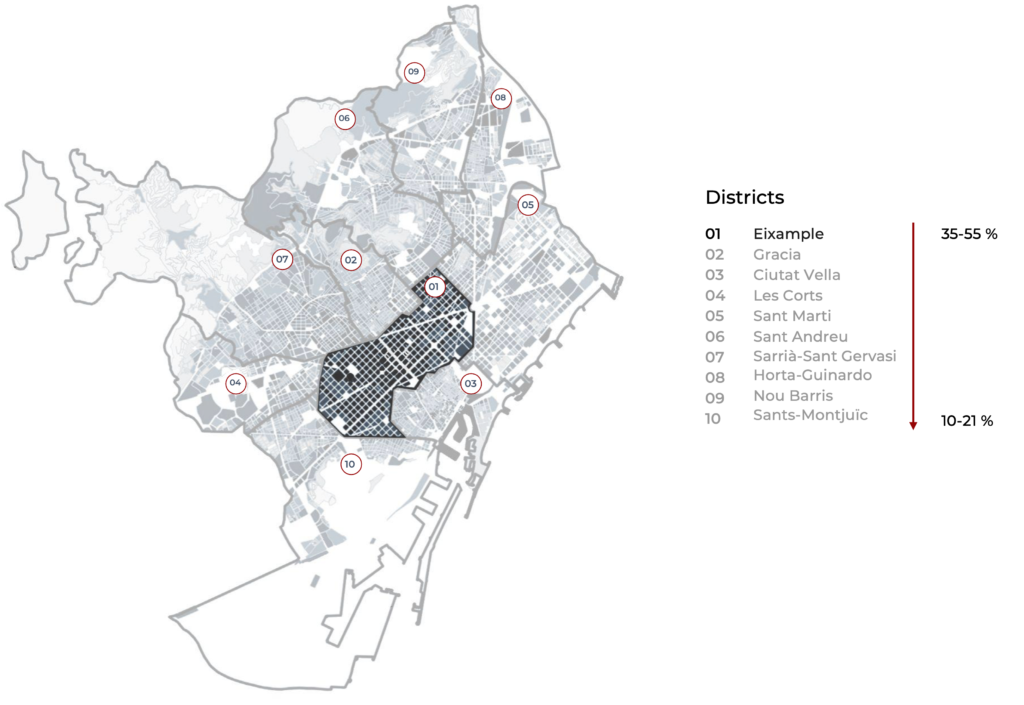
Through out this thesis we will be focusing on Eixample district.
Sound and Surfaces
How Sound Waves React

Sound waves reacts in 3 main ways. Reflection, absorption and transmission.
How Sound Waves React

And when we look at how they react on different types of surfaces, is that on straight and corner surfaces it reflects, on convex surfaces is it scatters to opposite directions, on concave surfaces ,it concantrates the sound waves by reflecting them toa common point. and on porous surfaces it diffuses the sound.
Movements of Sound Waves
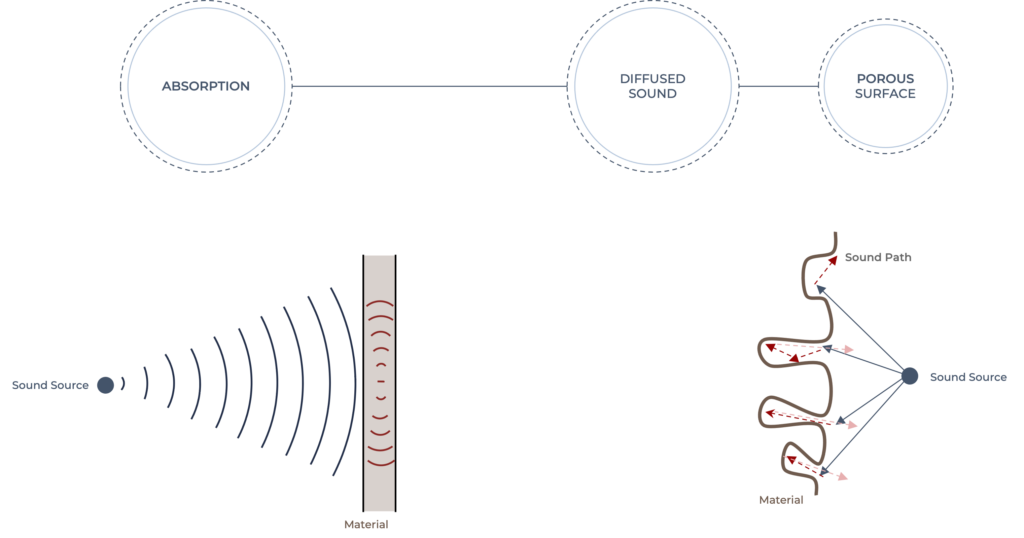
By minimizing the reflection and transmission rate we could maximize the absorption of sound through surface texture and porosity.
Materials
Natural Fibers and Their Sound Absorption Coeffiency
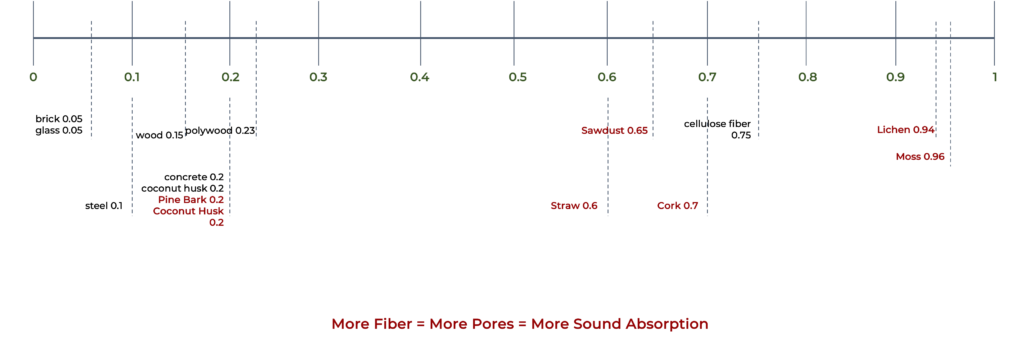
According to those properties the more smoother the surface is the more reflective they become. For instance glass, its sound absorption coefficient is 0.05, which is almost zero. although cork is 0.7 which is quite high. So the more fiber, or pores they have the more absorbent they become.
Material Experiments
Understanding Porous Materials

I have tested 5 natural fibers, Such as like pine bark,coconut husk, straw , sawdust and cork and 3 different binders. However after the experiments non of these mixtures can be used. In a way they represent failure and makes them useful for this research.
Experimental Bricks

Either they become too wet, broke into pieces, cracked, or too durable.

And in some cases they weren’t suitable for heat, or it was hard to bind.
Material Conclusion
After the failed experiments, I have decided to continue with 2 materials. Cork and Moss, because they by themselves are already better for sound acoustics.
#01 Cork
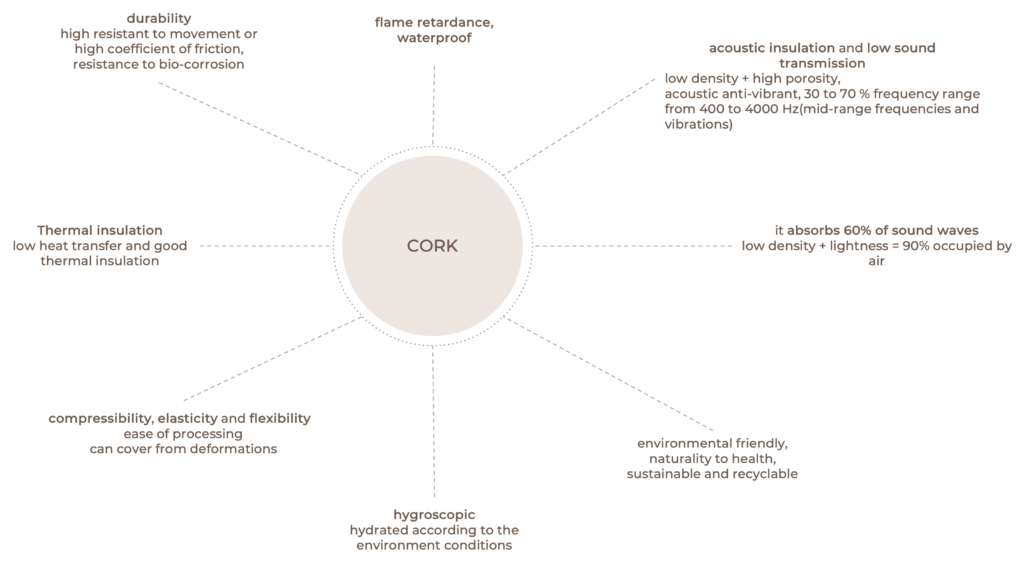
One of the benefits of using cork is that it has low density and high porosity, which makes it a great for mid-range frequencies. It has low density and lightness, therefore It absorbs almost 60 percent of sound waves. Its flexible, durabil, its waterproof and flame retardant.
#02 Moss
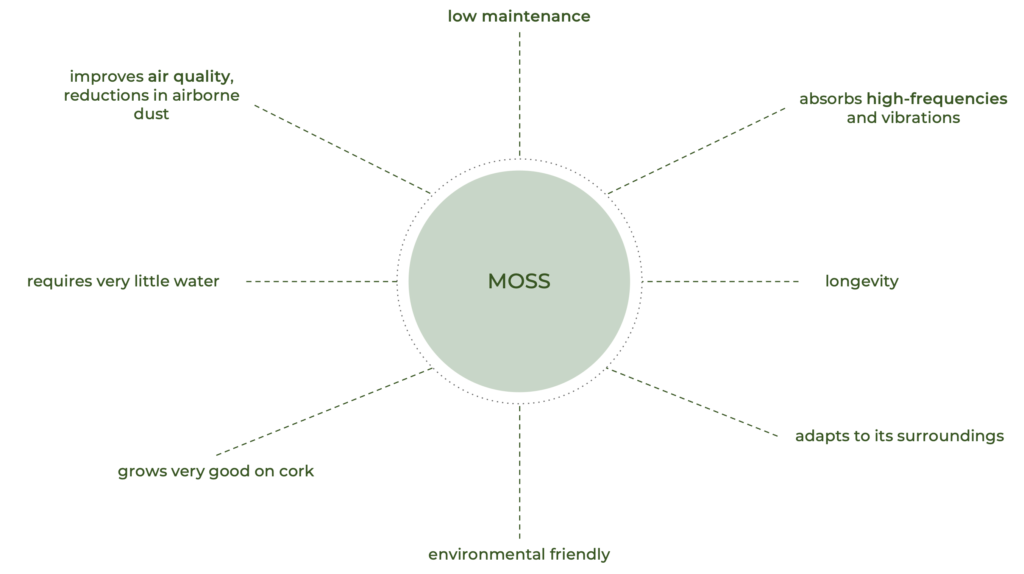
On the other hand moss absorbs high frequencies, adapts to its surroundings, requires very little water and environmental friendly.
Cork
World Cork Map
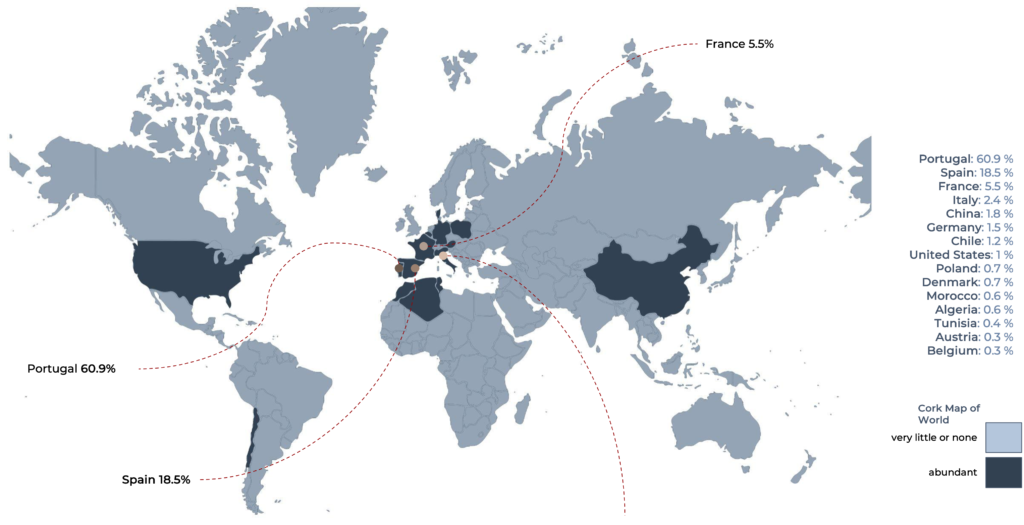
The main distributors of cork is Portugal and Spain.
Cork Map of Spain
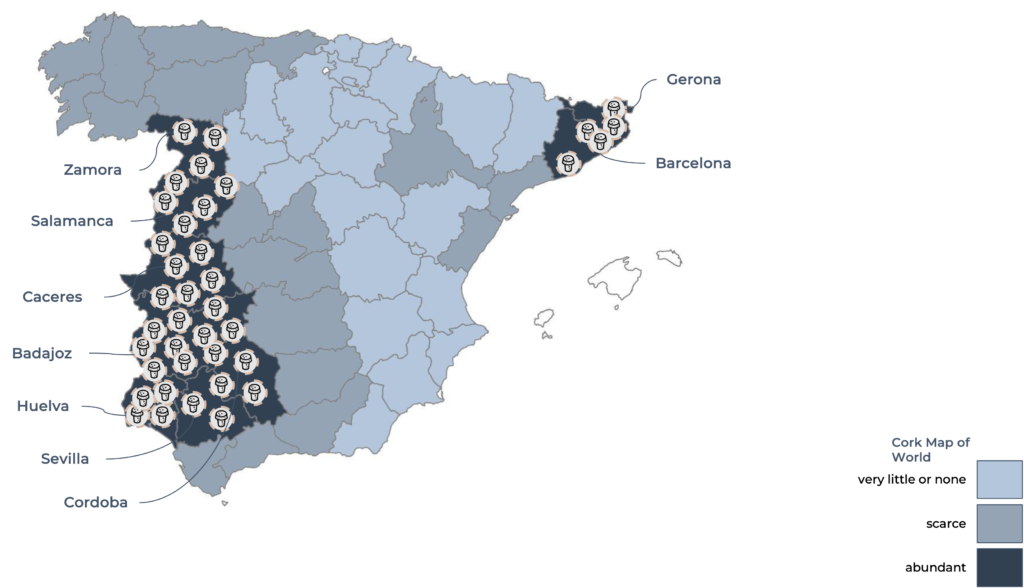
In Spain the cork oak tree mainly grows in Extramadura region. Than in Catalonia, Andalusia and Castile y Leon.
Formats of Cork

There are five main formats of cork can be found. These are the cork plate, agglomerated cork, expanded cork, granulated cork and cok powder.
State of Art
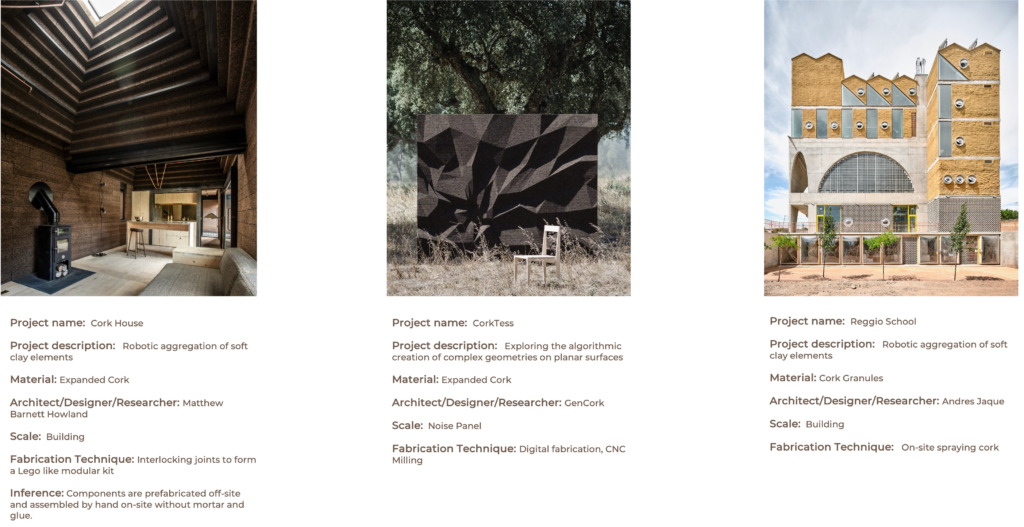
https://www.archdaily.com/993018/reggio-school-andres-jaque-office-for-political-innovation
Here are some state of arts, for the usage of different cork types. In cork house expanded cork have been used. and during the processbecause off the interlocking joint forms no mortar or glue was needed. The second, corktess is a noise absorbing panels off gencork. They use cnc milling on expanded and aggloromated cork. And the third Reggio School is a project of Andress Jaque. Basically they used on-site spraying for cork to increase bio growth.
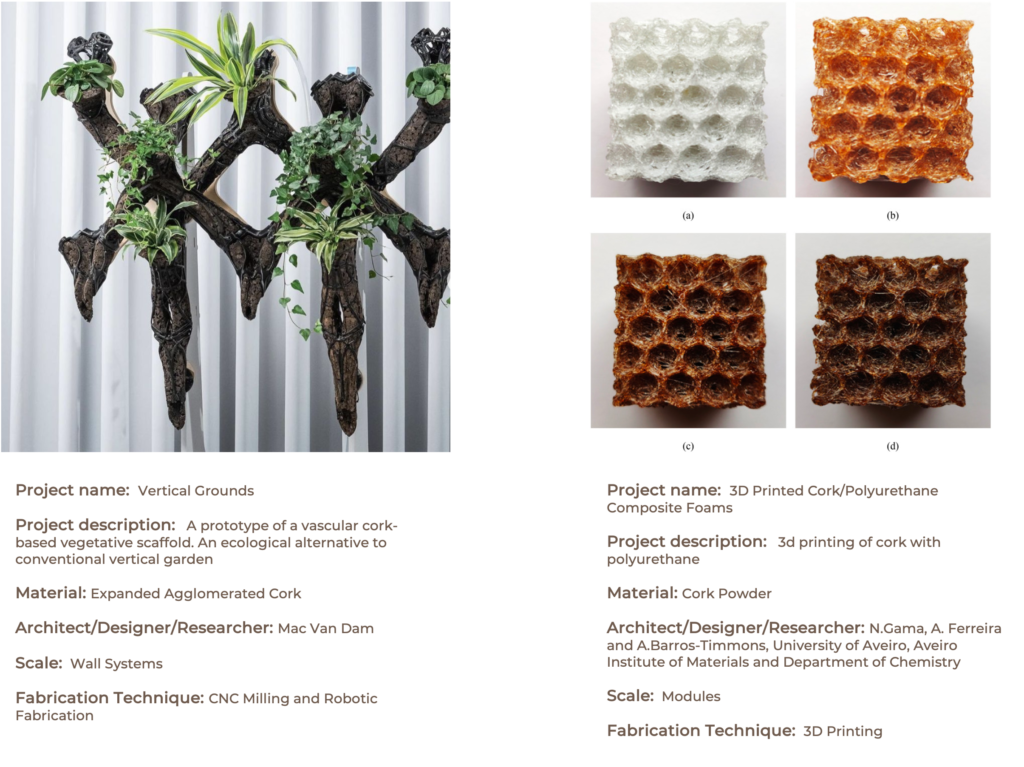
http://www.macvandam.com/
Vertical Grounds is a project of Mac Van Dam, he made a prototype of a vascular cork based vegetative scaffold. And one of the only example of 3d printing with cork without using cork filament is the research project of University of Aveiro, Chemistry Department. They used cork powder and polyurethane mixture, to 3d print small modules. The only problem with this project is that they only tested the durability of the modules, and more over the maximum usage of cork powder is 5 percent so it quite small.
Cnc Milling with Cork

For my research studies I wanted to test some different fabrication techniques with different cork formats. For Cnc I have tested agglomerated cork.
Geometry Catalog
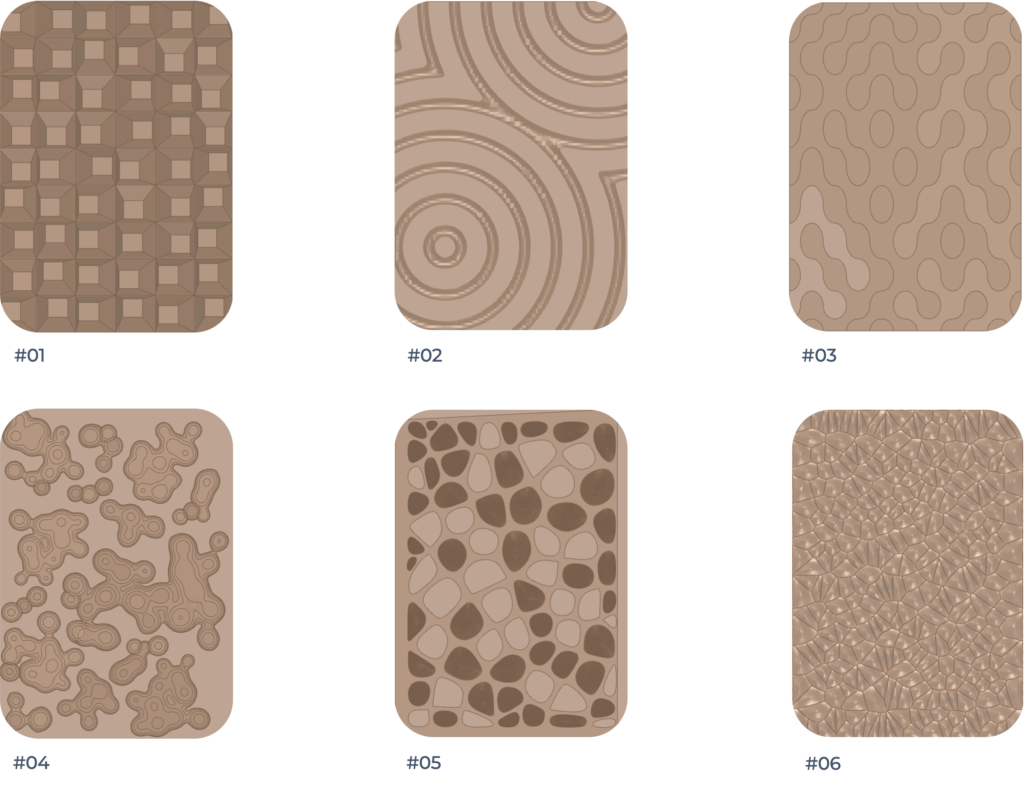
And for that I have tested on 6 different geometry types on 30mm A4 agglomerated cork panels.
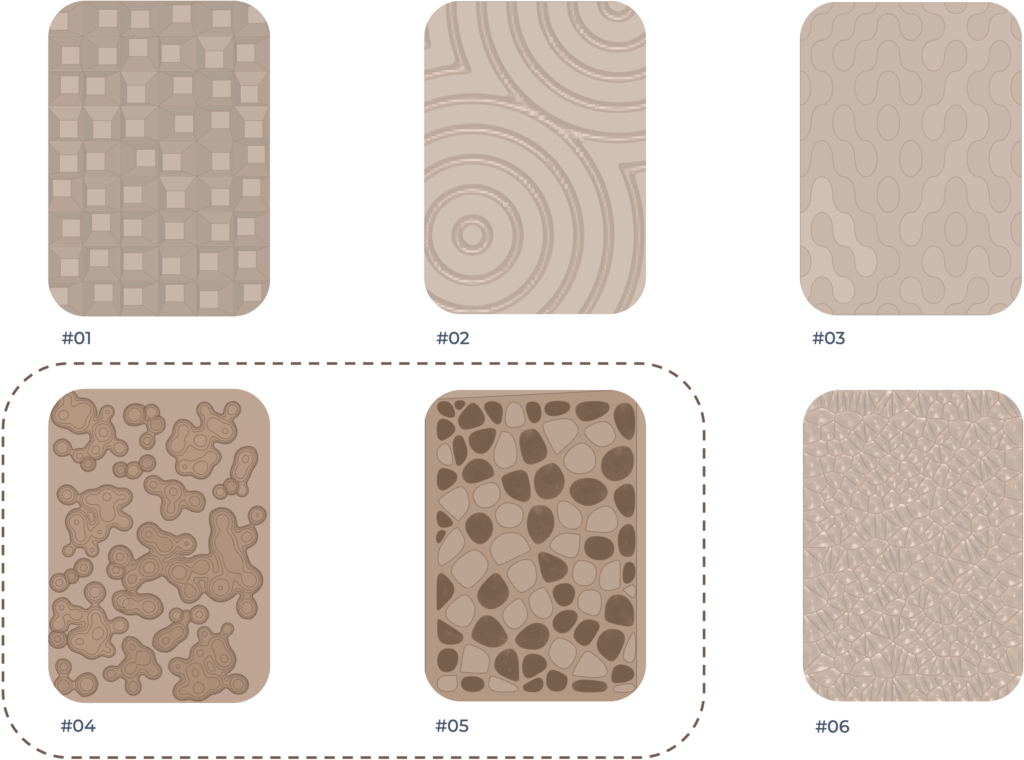
From these I choose 2 of them to include moss to create Bio-receptive panels
Bio-Receptive Geometries
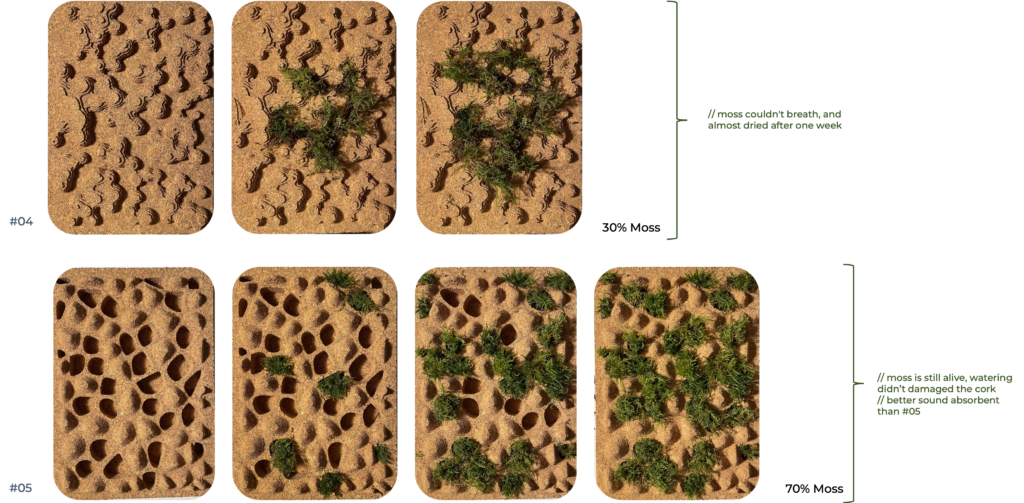
In one of them it has 30 percent moss and in the other one it has 70 percent. The one moss in the one that had pockettings is still alive. although in the other one it had already started to dryout.
3D Printing with Cork

Eventhough this part of the research is still ongoing. I have started to test 3d printing modules for cork powder.
Geometry Catalog

I made some different geometries and 3d printed them with filament.
Design Proposal
Geometry Exploration for Design
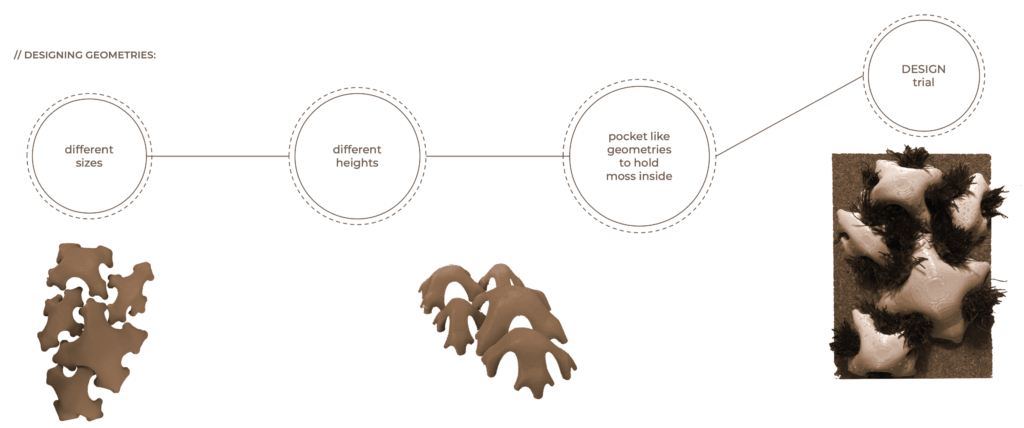
For geometry exploration for design purposes, I tried different parameters for better sound absorption: the modules should be in different heights, different size, that are pocket like shapes, so that it can absorb the sound that comes from all different angles. So I tried a design trial with 3d printing with filament.
Workflow for 2nd Term

For second term, the workflow I was planning to follow, is that firstly I’m expecting to work and colabrate with ICSuro (Catalonia Cork Institution), for supplying cork powder. Since 3d printing cork powder is not common, planning to do experiments on cork powder, on material properties with binders such as pu, etc.Explore more patterns and design.

